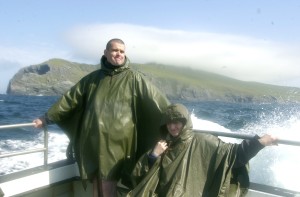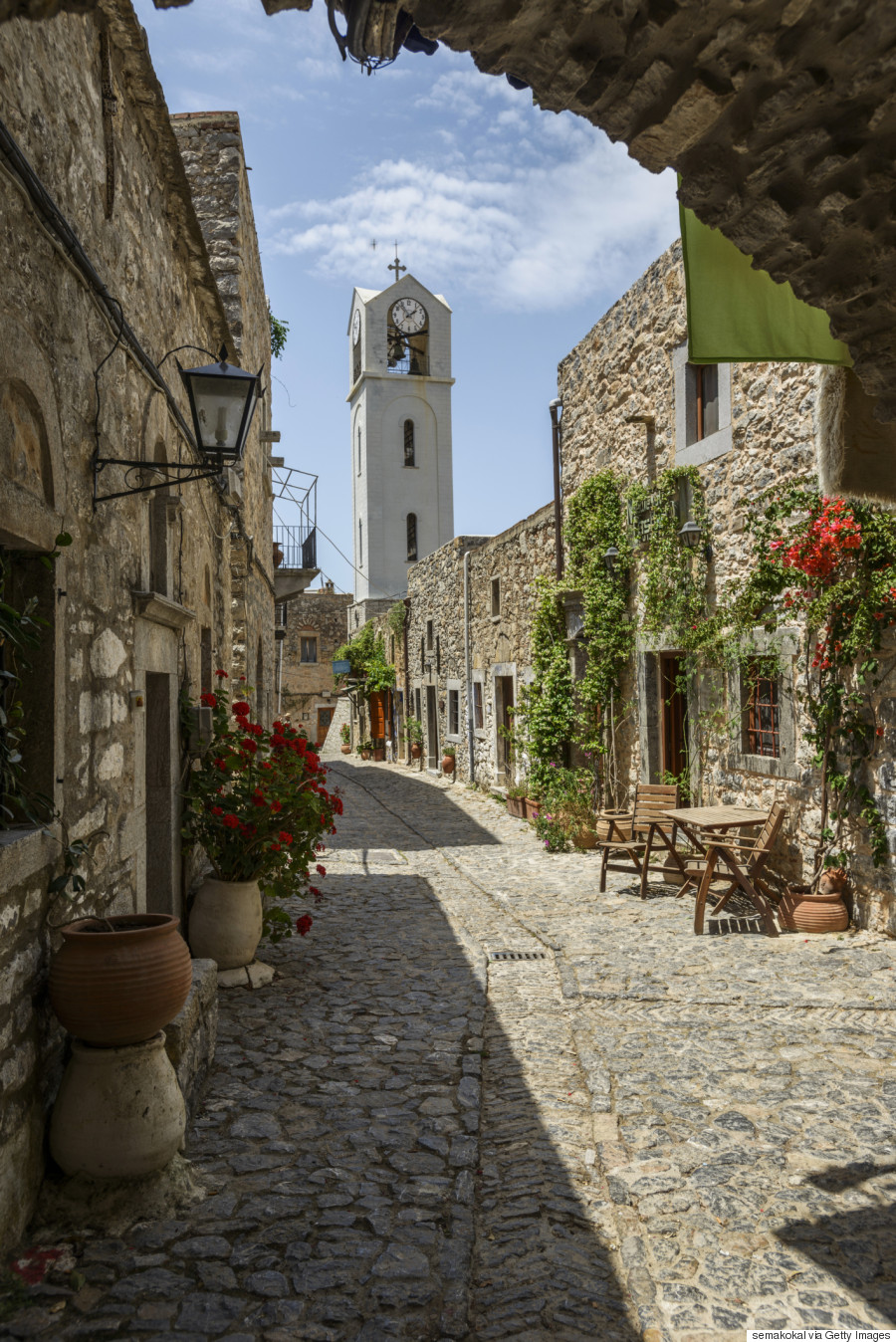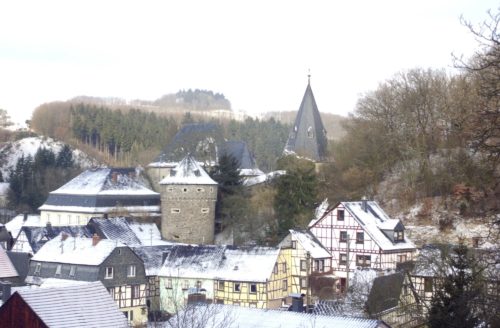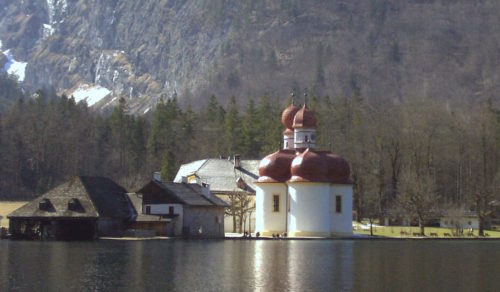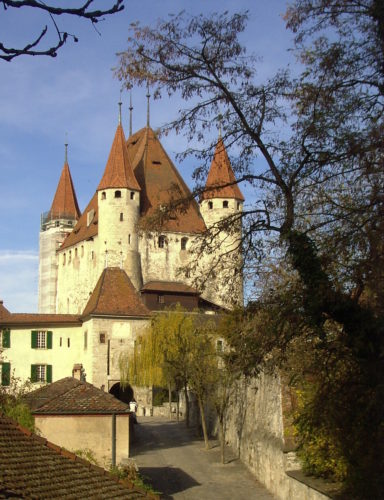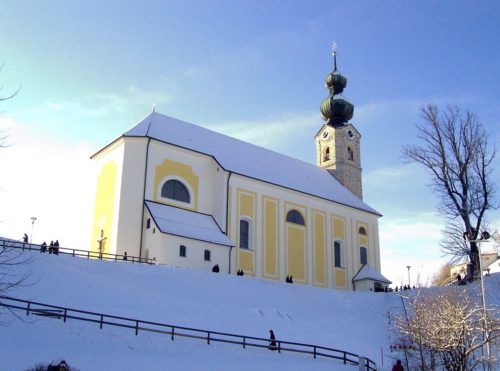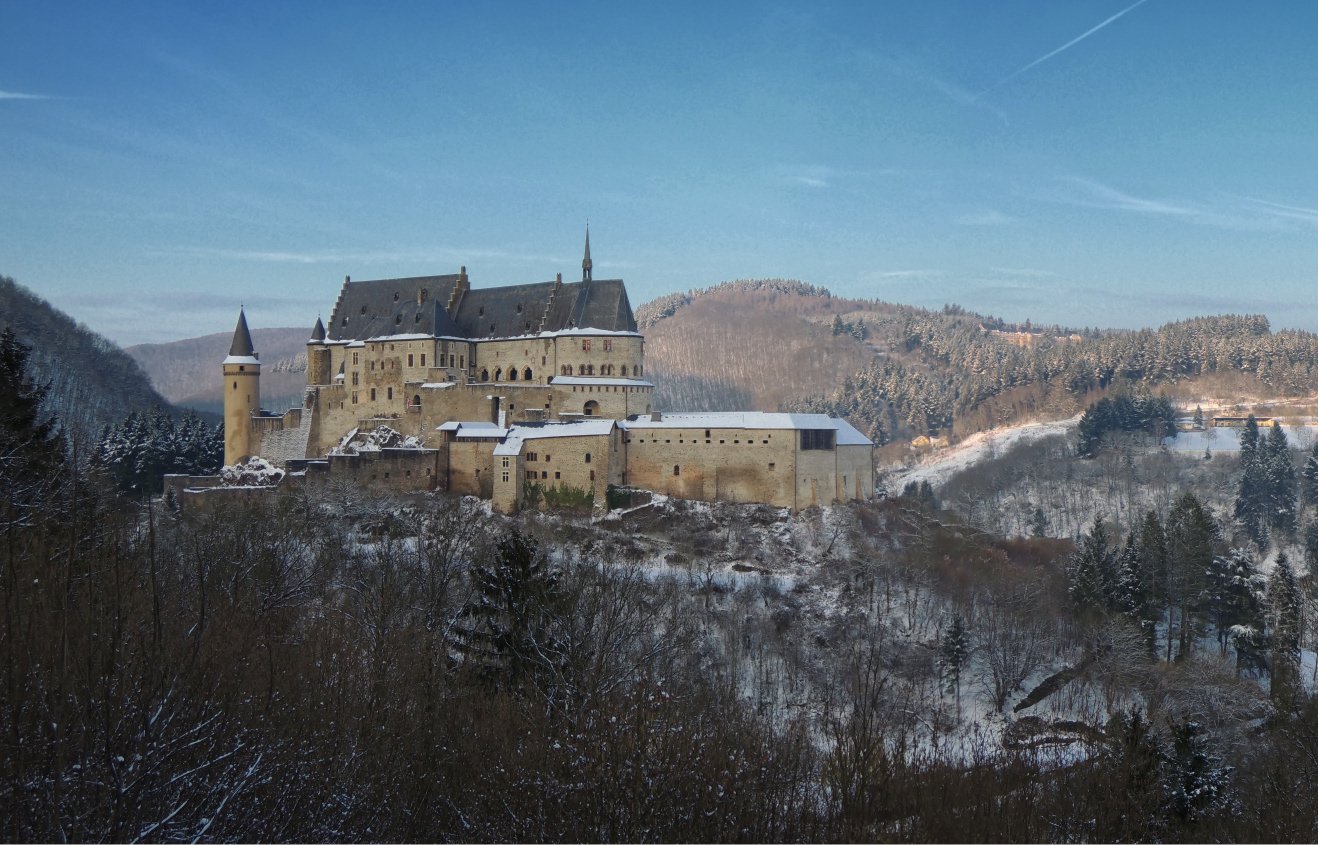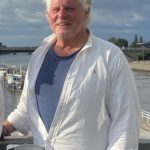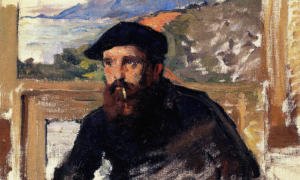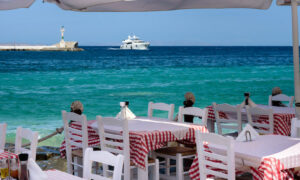(Editor’s note: We posted the first version of this post last February on our beta site. We’ve updated it with more of the best places we’ve been.)
Tourists go for the sure thing and bucket lists, and we get that. They go where the tour bus takes them. Even hard-core travelers rarely venture too far into the unknown, constrained by the limits of time and money.
But living in a country … well, that’s a whole different experience. Then, you really get to know your territory like a local. Because you are a local. Every American, Brit and Aussie knows about Provence, Paris, Rome, Vienna, Amsterdam … you name it. And they’re all as good as advertised. But being an expat in Europe gives you the opportunity to know an entire continent down to its bones.
What we at Dispatches want to do with Detours is share the best from our decades of exploring and induct you into a class of savvy expat travelers who know there’s more to life than standing in line at Euro Disney. It’s amazing how much of Europe is still undiscovered by the tourist hordes.
We’ll have new tips for you from time to time as we blunder into fabulous new places. And please share your favorite off-the-beaten-path destinations.
• Skellig Michael off the coast of the Republic of Ireland:
What the hell were we thinking? Our friends from the States heard about Skellig Michael, this wild island off the Irish coast that had been a refuge for monks. Now, there were only ruins, and the island off the extreme southwest coast had returned to nature, overrun by queer little birds called Puffins. So we book a boat. Which is when we should’ve figured out what we were in for. Boats only go to the island from the Skellig Adventure Center in Portmagee on certain days, because the crossing is often too dangerous.
That’s right … too dangerous. The trip out was rough. Very rough, as you can see by the photo of the brave couple at right. Once we got to the island, we had to time the swells until the waves popped the boat up closer to the quay and we could pull out the kids! Then, safe and sound, we explored the sheer cliffs, minding the path so we didn’t plunge 500 feet onto the rocks below, or into the raging sea.
I know … you’re dialing Child Protective Services as you read this. But seriously, there is no more fabulous adventure than spending a day among the ruins on this isolated dot in the Celtic Sea.
There’s just one thing: Skellig Michael is probably going to be waaaay more popular now because it was used as a location for a Star Wars movie.
• Mesta, on the Greek island of Chios:
Everyone knows the Greek islands … or they think they do. But what they really know is Santorini, the travel-poster perfect island where all the perfect white buildings have blue roofs. In reality, the Greek islands are so incredibly diverse that each is its own world. We lived in Imzir, Turkey, a 45-minute ferry ride to Chios from Cesme. We knew on our first trip that we’d gotten lucky … that we’d landed close to one of the coolest islands in the Aegean.
Mesta is a Medieval fortress village that got rich off of resin from the mastic tree, which used to be used in everything from varnish to medicine to chewing gum. We rented apartments that were actually part of the city wall. If you can find your way through the maze of tiny streets, the center square of Mesta is the Church of the Taxiarches. There is no more mystical place. Near Mesta is the village of Pyrgi, where all the buildings have elaborate graphics etched into the plaster. Go to Lesvos to eat or Samos to party. Come to Chios to relax and experience the best in Greek culture.
There’s just one thing: Mesta is car-free and crime-free, so your kids can explore at will. Chios Town is a noisy, crazy port of entry where kids race around on mopeds and scooters till 2 a.m. It’s full of mediocre restaurants, some okay hotels such as the Grecian Castle, and some very nice shops. (There have to be more toy stores on Chios than in the rest of Greece put together.) But Chios Town is the largest town, so you have to go there for supplies. During the off season, there is absolutely no one around, and it can get eerily quiet. On one trip in late November, we had to check ourselves out of a hotel after the staff disappeared.
• Minerve, France:
Minerve is one of the loveliest villages in France, and it’s a place no Americans ever heard of. It’s an old Cathar village near Beziers in the South of France … a village where an ancient sect of Christians lived.
The Cathars were an offshoot of Greek Orthodox, but they diverged from conventional Christianity because they believed God had two natures – the evil, vengeful God of the Old Testament, and the benevolent God of the New Testament.
Well, they believed that until they were massacred by the Roman Catholic king. (If you go, get ready for some seriously grisly stories from locals.)
Fortunately, modern Minerve is a center for artists, and there are shops and studios galore. But it’s the scenery that makes this area so memorable. That, and the Minervois wine, which is bold and spicy.
There’s just one thing: Take some extra cash, because the art offerings are swell, but not inexpensive. Oh, and make a note to take side trips to the various caves and stock up on wine!
• Schloss Johannisberg, Germany:
This schloss, or château, outside Geisenheim is on the Rhine River’s wine road, just west of Weisbaden, Germany. I can’t recall exactly how we even found out about this place, but I’m guessing it was through Peter Jaeger, our travel guru at European Stars & Stripes. Peter is the kind of guy who can tell you the greatest places to visit in all of Western Europe, and we always listened. Because he’s visited them all! Schloss Johannisberg was one of the places we returned to often just because it’s fun, affordable and offers so much.
First, you can choose between a fancy restaurant experience, or eating outside in the casual courtyard cantina during the summer. Second, the whole operation is geared to marketing the Schloss Johannisberg wines, which are fabulous and reasonably priced. Third, the vineyards around the schloss go on forever, so there’s plenty of space to walk off that meal and the alcohol. Having lived in Germany, I know the country is more utilitarian than most Americans imagine. By contrast, Schloss Johannisberg has a glamour quotient that lets you live the fantasy of living like a German prince without maxing out your credit cards.
There’s just one thing: To make your trip really memorable, hit Schloss Johannisberg, then head into Weisbaden and Frankfurt. And don’t overdo it on the wine. The German polizei don’t take kindly to drunk drivers.
• Weissenstein, Switzerland:
This is one of the quirky places we found just driving around Switzerland with friends. But it’s stayed with us all these years. This remote section of the Jura Mountains is just about an hour southwest of Basel, and near Biel, is one of the most unique vantage points in Switzerland for viewing the Alps. On a clear day, you can see forever … or at least 20 miles south toward the northern rim of the Alps including Mt. Blanc.
The best thing about Weissenstein is the hiking high in the Juras. Our tip: Park near the Kurhaus Weissenstein Hotel, then follow the marked paths toward the best viewing points for the panoramic of the Alps. And this is important: You’ll be walking through actual pastures, so close the gates so the cows don’t get out. Also, check out the scale model of the solar system around the hotel.
This is one of the least touristy parts of Switzerland, so let’s keep Weissenstein to ourselves, okay?
There’s just one thing: The roads up into the Juras are incredibly steep, narrow and windy. Bring your best driving game ….
• Ecomusée d’Alsace, near Mulhouse, France:
This is a place where you can really geek out on French history and culture. The Ecomusée d’Alsace creators literally scoured France for authentic, distinctly French houses from Medieval times to the 19th Century that were abandoned or neglected.
The museum acquired them, then shipped them back to this recreated village outside of Mulhouse where they were painstakingly reassembled. Ecomusée d’Alsace is very much a living village, with artisans working in farm houses, school houses, barns, blacksmith shops … you name it. It’s a great day out for kids, because they get to go free-range on a huge piece of land with lots of animals, and there’s not much they can hurt. Check the calendar here to see when special events are scheduled.
There’s just one thing: The museum is near where France, Switzerland and Germany come together. All the information is in French or German. A lot of the “villagers” speak English, so you’ll be okay. But you might take someone who’s bilingual. Also, the best place to stay is Mulhouse, which is on the southern end of the Alsatian Wine road.
• Herrstein, Germany:
We tend to over-use the phrase, “The real ….” As in, “The REAL France,” or “The REAL Turkey,” to differentiate the authentic from the tourist Meccas. In an area where countless castles and architectural treasures were burned down during a series of wars since Roman times or were bombed flat during World War II, the ancient little market town of Herrstein somehow survived intact.
This is the REAL Germany. The remains of a castle, old church and lots of wonky half-timbered buildings are hidden in the center of what at first appears to be just another gray town on the German Jewel Road. But once you pass the old city walls into the heart of the village, you realize why the locals’ faithful restorations and emphasis on craftsmanship earned Herrstein a 1988 European Union Diploma of Merit for preservation.
When we lived in Heimbach, we found out about Herrstein from all the U.S. military people who loved the restaurant there. Groups of American and German friends have long, inexpensive Sunday meals at Café Zehntscheune. The specialty, Oma’s gefüllte Kartoffelklösse — Grandma’s stuffed potato dumplings — is super rich, creamy and contains about a gazillion calories.
The wild boar is fatty, but flavorful. The white wines and beers are among the best in the world. And, ach du Liebe zeit, the cheesecake and tortes! Why not have more? The restaurant started out a couple of centuries ago as the local tithe barn, where farmers brought the portion of their crops paid to the local prince in taxes. The lazy German-style Sunday here means just relaxing in one of the little squares or open areas amid half-timbered houses that date to the 15th century, or near the 13th-century clock tower, which is part of the only existent city gate in the Hunsrück area.
There’s just one thing: You’ll weigh 500 pounds if you come here too often. Also, this isn’t Tourist Land. The nearest place to stay is the equally ancient river town of Bernkastle-Kues … which itself is worth a visit.
• Königssee, Germany:
Bavaria has the most stunning scenery in Germany, and Königssee (the King’s lake) has the most stunning scenery in Bavaria. This pristine glacier-made lake amid the Berchtesgaden Alps stays pristine because the Germans only allow a limited number of visitors, who can only access the the far shores via electric boats.
As part of the show for visitors, guides bring trumpets or some sort of horn to demonstrate the echo effect of the lake off the surrounding Alps. They turn off the motors, and amid the eerie calm sound the horns, then keep blowing until you hear what sounds like a dozen trumpeters. Tour stops on the lake include St. Bartholomä, a famous pilgrimage church.
There’s just one thing: Yeah, this is as close to a touristy tourist attraction as we’ll ever list. But, the place is breathtaking! Oh, yeah … this is the heart of Hitler’s Bavaria, and his Eagle’s Nest retreat in Berchtesgaden is nearby. Best to ix-nay mentioning the atzi-nays around the locals, who are warm and welcoming.
• Lake Thun, Switzerland:
Everyone knows about the glitz and glitter destinations in Switzerland, from the Ferrari-clogged streets of Geneva to the ritzy ski resorts of Klosters. Then there is the majestic Switzerland, which is actually still sort of affordable. For 37 euros a night, we stayed in a converted granary on the side of a mountain that dropped down into Lake Thun, just outside Bern. Everything is close including Alpine glaciers above Interlaken where we had picnics.
But you really have to go no further than the town of Thun to find great restaurants and shopping. In the mornings, we’d awake to the sound of cowbells as the cows left the barns for a day in the pastures. We had views off our balcony of the lake below, and peaks such as the Matterhorn to our south.
Our love hovel, as we took to calling it, was minimalist, to say the least; tiny but cozy and comfortable. Our entertainment was a small radio, and I remember one night we listened to a country music station (in Switzerland!) that played Jim Reeves and Elvis as we played cards and games with the kids. To this day, it remains one of my fondest memories.
There’s just one thing: Eating out is freakin’ expensive because it’s Switzerland. Have a picnic in an alpine meadow below the glaciers … before Global Warming melts everything.
• Ruhpolding, Germany:
The Germans know Ruhpolding as a great place to stay in Bavaria whether they’re skiing on the Austrian border, or hiking in the summer. Americans don’t know it at all, and there aren’t even any Brits, who usually show up everywhere. This is a little town you can make your own.
We used it as a base to drive 45 minutes into the Mozart-and-chocolate town of Salzburg. But the more we went, the more we just stayed in Ruhpolding, which has everything you need including alps, bucolic pastures and winter sledding.
It also used to have – not sure it’s still there – the best Chinese restaurant in Europe, verified by the countless friends and family we took there who all exclaimed, “My God, this is the best Chinese restaurant in Europe!” There are also fabulous local restaurants on the little main street. But be warned, there will serious drinking and you will be expected to join in as the place bursts into post-dinner song. I’m not making this up.
There’s just one thing: Not a lot of people speak English in this neck of the woods. Learn German before you go.
• Vianden, Luxembourg:
A lot of expats in Luxembourg, the Netherlands and Belgium know about this little town, but not many actually go to the trouble of visiting. If they did, they’d experience a definitively European moment. You’re just driving along the road from Luxembourg City through pastures and farm land when you turn a corner. All of a sudden you begin descending into a big river valley, and on your right is the most magnificent castle in this region of Europe. Stunning.
A few years ago, I wrote a travel piece about Vianden and interviewed Mike Hut, one of the guides. Hut told me, “You see the people coming into town, and when they look up and see the castle, they forget they’re driving. They’re looking up, saying, ‘Look at that!’ One wonders why there aren’t more accidents.” Vianden has one of the few intact restored castles. Unlike many castles, Vianden’s interior lives up to the exterior grandeur. Displays help amateur historians understand how Vianden evolved from a crude fifth century Rome frontier garrison on a minor trade road to the House of Vianden, with connections to William of Orange (or William III if you’re British). It’s worth a visit year round because there’s always some event going on there. Art shows. Medieval fairs. Music. You name it. The little town is also a relaxing tourist destination, full of shops, restaurants and cafes.
There’s just one thing: This is NOT an off-the-beaten-path destination. About 200,000 visitors tour the castle each year, peaking for the Middle Ages festival each August.
• Molyvos, on the Greek Island of Lesvos
We know … you’re thinking, “TWO destinations in the Greek Islands?” Well, we could name a hundred. But this town on the north end of Lesvos is fabulous. It has it all … ancient buildings along narrow, winding shopping streets that are overhung with wisteria. Great restaurants and sea views you’ll remember forever. Molyvos is one of the most picturesque unspoiled North Agean villages, still complete down to the Byzantine castle that sits atop the flat-top mountain around which the village sprawls.
It’s the setting that’s tourist-poster perfect, with Molyvos tucked into a protected inlet of a small rocky peninsula that sweeps into an long arch of coastline.
If you choose your cafe or restaurant one side of the village, you’ll have views of fishing boats and sailing craft below. If you choose the opposite side, you look down into seaside pastures with cows and the occasional olive tree. It’s a place the lazy man could stay for weeks. But if you’re more energetic, Lesvos has lots to see.
There’s just one thing … actually two. Molyvos is also named Mithymna, with the latter name appearing on maps. I know … we’re confused, too. And getting from the main Lesvos town of Mytilene to Molyvos is test. There’s one section of road that goes right through the center of a tiny village, and men sitting around playing backgammon have to move their chairs slightly so your car can slide by. Seriously ….
Co-CEO of Dispatches Europe. A former military reporter, I'm a serial expat who has lived in France, Turkey, Germany and the Netherlands.



